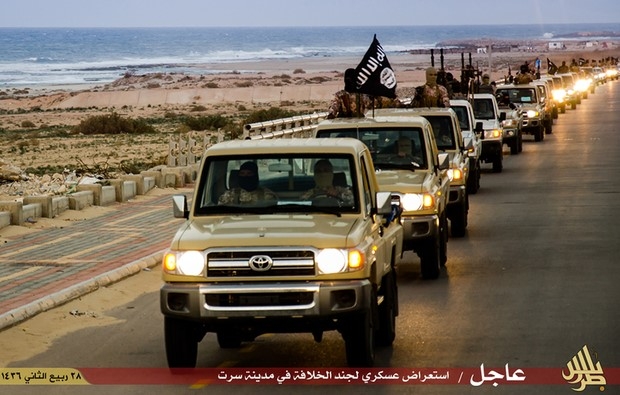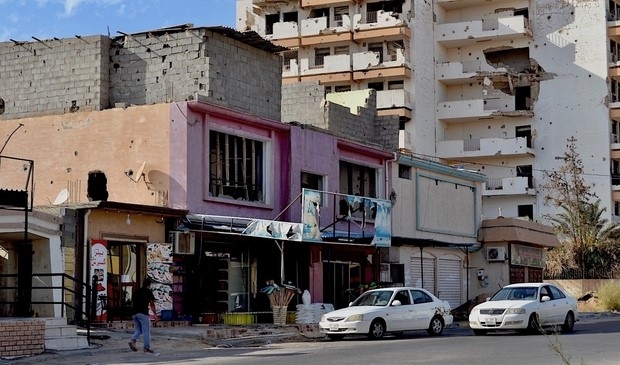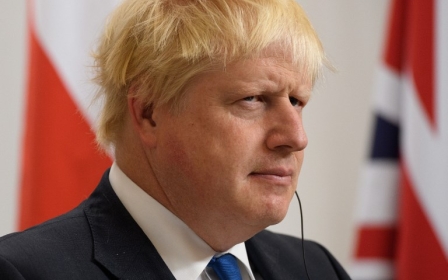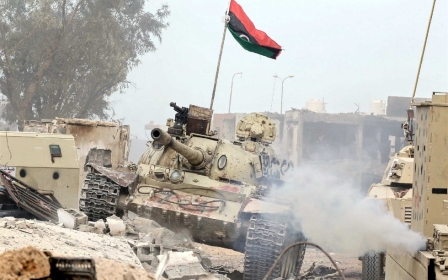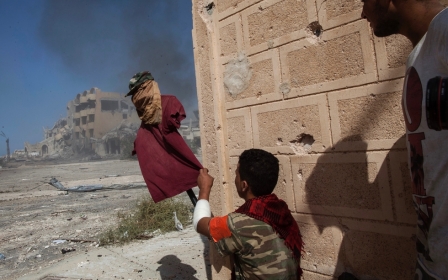Alive and kicking: Sirte rebuilds from the ruins of war with IS
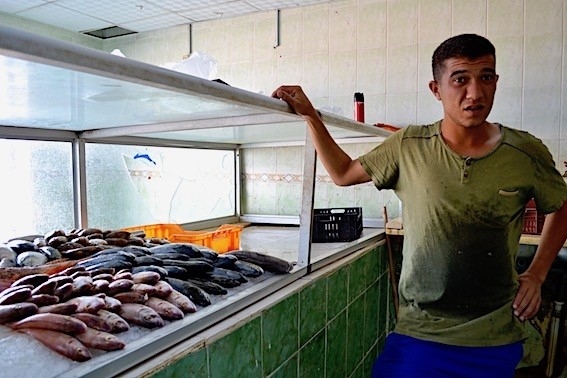
SIRTE, Libya – It is late in the afternoon when the crowds of men pour into a building on one of the busiest streets in Sirte. The local football team, called Khalij (the Bay), is hosting its second friendly match since the city was freed last December.
Since the local stadium was destroyed, the match is being held at the training ground - which Islamic State once used to graze cattle. The grass is poor, the field small, and the game slow. But none of that matters. The match is symbolic.
It has taken months to get over IS's brutal time in power, but the city is back - alive and kicking.
Fadhel Aguila is among the few dozen spectators attending the match, and he is proud to be there.
“We were refugees in our own country for a whole year,” he told MEE.
“When we came back, there was nothing here. We never imagined the situation would improve so quickly. Take today’s match, the police aren’t even necessary.”
We never imagined the situation would improve so quickly. Take today’s match, the police aren’t even necessary
- Fadhel Aguila, football supporter
According to Ali Emsameen, a resident of Sirte who fought to free the city, security conditions in Sirte are good.
“We’ve set up a collaborative security force with the chamber of military operations comprised mainly of two brigades from the city," he said.
"Police intelligence has started working again. And the troops who freed Sirte are stationed at the edge of the city in case of trouble.”
Another resident, who wanted to remain anonymous, said: “If former IS fighters try to return, they will be denounced. I don’t think we’ll be seeing families with close ties to IS coming back any time soon."
The group's threat has not been altogether averted, however.
Though the centre of Sirte has not been faced with any security issues since the city was freed, the threat has not just gone away: IS cells are operating in the nearby desert. On 22 and 26 September, the US military bombed IS positions southeast of the city, killing dozens of fighters.
History of violence
The presence of armed fighters in the region dates back to the Libyan civil war. The first to take control as Muammar Gaddafi was toppled was Ansar al-Sharia. Many members of that group would later join IS.
In February 2015, IS fighters captured a handful of buildings in Sirte. To announce the victory, they released a video showing the killing of 20 Egyptian Coptic Christians and a sub-Saharan nomad on a beach near Sirte.
Earlier this month, the bodies were found in a mass grave.
The IS would gradually extend its influence. By June 2015, the entire city and more than 200 kilometres of coastline were under its control. Initially backed to a certain extent by a local population disappointed with Libya’s central government, the organisation quickly established its own rules. Opponents were executed and civilians forced to flee.
After months of delays, forces loyal to the UN-recognised Government of National Accord (GNA) in Tripoli launched Operation al-Bunyan al-Marsous on 12 May 2016. In December that same year, after seven months of fighting had left nearly 700 GNA fighters dead, Sirte was officially freed.
During this period of unrest, Mahmoud Emsameen, the father of Ali Emsameen, moved to the nearby town of Misrata, where he was put in charge of looking after refugees from Sirte.
At the time, he would ask journalists not to disclose his name. Today, he’s no longer afraid. All of his efforts are being poured into rebuilding his city and his home, which was destroyed by fire during the fighting.
Mahmoud Emsameen says up to 70 percent of the population has returned. “The residents of Sirte are rebuilding the city single-handedly. Many have returned since getting the green light from authorities in March. They have reopened their shops and are back at work. Life is getting back to normal in the city.”
At the wheel of his car, Emsameen senior tours the residential neighbourhoods, pointing out recently reoccupied houses. The district known as Number 1, where the IS fighters made their final stand, was almost entirely destroyed.
“People have returned in spite of everything. Some have been able to make repairs on their homes quickly while others have condemned parts and are living in just a few rooms. The people whose houses were totally destroyed are forced to rent.”
Such is the case of 21-year-old Abdallah Boujazzia. He pays 700 dinars (about $510) rent to live with his family, a few blocks from his own house that was bombed during an air raid. But the young man isn’t complaining. The fish shop he and his brothers own is still in one piece. So is their fishing boat.
“We are able to make a decent living thanks to our shop. No other fish stores have opened yet," he says. "People come here from all over the city. We even occasionally send fish to Misrata and Tripoli.”
His shop, in the heart of the city’s first district, is surrounded by bullet-riddled buildings.
The residents of Sirte are rebuilding the city. Life is getting back to normal
- Mahmoud Emsameen, resident
In an area south of the city centre, Rabia is little inclined to talk to MEE. Prompted by Mahmoud Emsameen, he agrees to answer our questions: “Is he still be afraid of the IS? Does he hold a grudge against the West, and the French in particular, for their role in the 2011 war that toppled the regime and the region’s native son, Gaddafi?”
Rabia, who refuses to give a last name other than “the Green”, the colour of the former regime, avoids the questions explaining, instead, that he spent 32,000 dinars on rebuilding his house.
“IS fighters were living there. When they left, they set fire to it.”
IS forces burned buildings to create a literal smokescreen as they evacuated the city. Rabia, who is the father of two children likely to return to school any day now, preferred to draw on his savings rather than to wait for any highly unlikely aid from the Libyan government.
Like many of his fellow countrymen, he is resigned to fate and does not ask questions. “We just have to get back on our feet. That’s all.”
As soon as the fighting ended, he reopened his store where he sells telephones and tablet computers - today with a new twist. “Since people don’t have ready cash, I launched a new product: used phones.”
And his strategy is paying off. A continuous stream of customers can be seen entering and exiting his store whereas a year ago, the city had neither telephone network nor electricity.
Colours and patterns were forbidden under IS. Only a year ago, black clothes were all you saw
- Omran, salesperson
In downtown Sirte, traffic is normal. Men are seen decorating a car for a wedding. It is the traditional last day of celebrations, the day the bride leaves her parents’ home for good to live with her husband. The clothing stores are also doing business as usual.
Omran, a salesperson in one store, gladly speaks to MEE: “Look at those women’s clothes over there. Before, we weren’t allowed to sell them. Colours and patterns were forbidden under IS. Only a year ago, black clothes were all you saw in this section of the store.”
The painful past is near at hand, however. The IS acronym Daesh is still visible on the city walls, though some have been painted over in a hurry. These stencilled messages indicate that shops were selling halal products and paying taxes to the IS.
The citizens of Sirte hope today for a return to normality. But the reminders of the city’s traumatic past will be difficult to forget. On 26 September, the city was to host the football team from Beida, the first Libyan League home game to be played in Sirte. The visiting team refused to play in war-torn city, citing logistical and security reasons.
This article is an edited translation from the original French.
Middle East Eye propose une couverture et une analyse indépendantes et incomparables du Moyen-Orient, de l’Afrique du Nord et d’autres régions du monde. Pour en savoir plus sur la reprise de ce contenu et les frais qui s’appliquent, veuillez remplir ce formulaire [en anglais]. Pour en savoir plus sur MEE, cliquez ici [en anglais].


